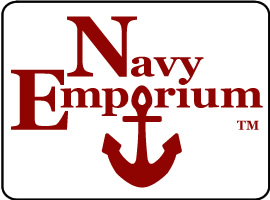The USS Andrew Jackson SSBN-619, a Lafayette class ballistic missile submarine was built by the Electric Boat Division of General Dynamics Corporation, in Groton, Connecticut. Its construction started in 1961. Was finished in 1963. Named after Andrew Jackson, the President of the United States (1829-1837) the submarine honored his leadership during the War of 1812 the First Seminole War and his role in the Battle of New Orleans.
A notable feature of the USS Andrew Jackson SSBN-619 was its capacity to carry Polaris missiles with warheads – a key element in Americas nuclear deterrence strategy during the Cold War. Equipped with sonar and communication systems it operated effectively beneath ocean depths.
The USS Andrew Jackson SSBN 619 left a lasting impact on the US Navy by contributing to maintaining nuclear capabilities amid heightened tensions with the Soviet Union. As part of the Navys fleet of missile submarines, it played a role within Americas nuclear triad alongside land based intercontinental ballistic missiles and strategic bombers.
The USS Andrew Jackson SSBN-619, a Lafayette class submarine was specifically built for missions, at sea. Housed a team of more than 100 sailors. Its main role was to serve as an stealthy platform for launching missiles if needed during a nuclear conflict. Captain John E. Christensen took the helm when the submarine was commissioned on November 3, 1962.
After its commissioning the USS Andrew Jackson SSBN 619 began its service with the US Navy engaging in patrols and training exercises. The crew underwent training to ensure they could efficiently operate the submarine and its weaponry. Throughout its tenure the USS Andrew Jackson SSBN 619 played a role in the US Navys nuclear deterrence strategy contributing to maintaining peace and stability during a period of global tensions.
The Silent Sentinel: Exploring the USS Andrew Jackson SSBN-619
The USS Andrew Jackson SSBN 619, a Lafayette class ballistic missile submarine served in the US Navy from 1963, to 1989. Measuring 425 feet in length and 33 feet in beam it had a submerged displacement of 7,250 tons. Its robust hull was crafted from high strength steel to endure the demands of deep-sea missions.
Powered by an S5W pressurized water reactor the USS Andrew Jackson could reach speeds exceeding 20 knots underwater. It boasted technology for detecting and monitoring enemy ships along with a precision navigation system.
The submarines main firepower consisted of its arsenal of 16 Polaris A 3 missiles of delivering nuclear warheads to distant targets. In addition to this armament it carried torpedoes for self defense and submarine operations. The missile launch tubes were situated in the portion of the submarine enabling missile launches while submerged.
The USS Andrew Jackson provided a second-strike capability as part of national security measures. This second-strike capability played a role in Americas nuclear deterrence strategy during the Cold War era.
The submarines cutting edge technology and armaments established it as a presence, on the waters able to fulfill its role, in deterring threats and safeguarding.
USS Andrew Jackson SSBN-619 Crew Member Reports of Time Aboard
The USS Andrew Jackson (SSBN-619) holds a rich tapestry of memories from its crew members, spanning from its commissioning in the early 1960s to its decommissioning in the late 1980s. These recollections paint a vivid picture of life aboard this ballistic missile submarine, highlighting both the camaraderie and the challenges faced by its sailors.**Early Years and Plank Owners:**
Several crew members, such as Charles Brickell, Wayne Clark, Jim Denzien, Sam Eddy, Alfred Lutz, James Robertson, Ray Sears, and Bill Trammell, were plank owners, meaning they were part of the original crew when the submarine was first commissioned. These sailors recall the initial patrols, the excitement of commissioning, and the early missions out of Rota, Spain. They fondly remember the leadership of Captains Whittle and DeMund, and the strong bonds formed during these formative years. The early 1960s were marked by significant events, including the submarine's launch at Mare Island Naval Shipyard and its first patrols.
**Memorable Incidents and Patrols:**
Throughout its service, the USS Andrew Jackson experienced numerous notable incidents. Greg Arneson recalls a particularly tense moment in the Mediterranean when the submarine had a close encounter with a Russian sub, necessitating a period of silence until a fast attack submarine arrived to divert the Russians. Bob Bickford and others remember missile shoots at Cape Canaveral and sound trials in the Virgin Islands. The submarine also had its share of mishaps, such as the time it was hit by its own torpedo during MK48 certifications, as recounted by Bob Carey and John Dugan.
**Life Aboard and Liberty:**
Life aboard the USS Andrew Jackson was a mix of rigorous duty and moments of leisure. Roger Beck and William Palazzi fondly recall the liberty in Dunoon, Scotland, enjoying fish and chips and the local pubs. The camaraderie among the crew was a recurring theme, with many sailors, such as David Campbell, Dennis Gonzales, and Patrick Couillard, emphasizing the tight-knit nature of their teams and the friendships that were forged. The crew also found creative ways to entertain themselves, from slot car races in mid-patrol to playing Atari games in the crew's lounge, as remembered by James E. Lawton.
**Challenges and Achievements:**
The submarine's crew faced numerous challenges, from the technical demands of their missions to the personal sacrifices of being away from family. Richard McNamara and others highlight the honor of serving during the Cold War, completing successful deterrent patrols. The crew's resilience and adaptability were tested during various refits and overhauls, such as those at Portsmouth Naval Shipyard and Electric Boat. Despite these challenges, many crew members, like Donald Hammond and Ruben Villarreal, rose to the occasion, achieving personal and professional milestones.
**Leadership and Mentorship:**
Leadership played a crucial role in the submarine's operations. Crew members like David Hooker and Ygnacio Espinoza express gratitude for the mentorship they received from their superiors, which helped them grow both as sailors and individuals. The leadership of commanding officers, such as CDR Eric Krieger, was particularly impactful, with many crew members recalling their positive influence and the high standards they set.
**Legacy and Reflections:**
As the years passed, the USS Andrew Jackson continued to leave a lasting legacy. Crew members like Kevin Lynch and Philip Lefavour were present during the submarine's decommissioning, marking the end of an era. The memories shared by the crew reflect a deep sense of pride and nostalgia for their time aboard the submarine. Reunions and associations, such as those organized by Sam Eddy and others, help keep the spirit of the USS Andrew Jackson alive, allowing former shipmates to reconnect and reminisce about their shared experiences.
In summary, the memories of the USS Andrew Jackson (SSBN-619) crew members provide a rich and detailed account of life aboard this storied submarine. From its early days and significant missions to the camaraderie and challenges faced by its crew, these recollections offer a glimpse into the unique world of submarine service and the enduring bonds formed beneath the waves.
USS Andrew Jackson SSBN-619: A Legacy of Silent Strength and Strategic Evolution
The USS Andrew Jackson (SSBN 619) underwent upgrades over its years of service to stay ahead, in technology and strategic deterrence. Throughout its service, the USS Andrew Jackson received improvements such as advanced sonar systems, enhanced navigation equipment and upgraded missile launch systems. These enhancements played a role in keeping the submarine ready and extending its service life to adapt to changing threats and technological progress.
The USS Andrew Jackson played a role in the United States strategic deterrence strategy during the Cold War era. Equipped with Polaris A 3 missiles this submarine had the ability to deliver warheads to distant targets ensuring a potent second-strike capability. This capability served as a deterrent against adversaries by showcasing Americas readiness to respond with force should there be any nuclear aggression.
The submarine's ability to operate covertly and persist in the oceans allowed it to go unnoticed, for periods poised to launch its missiles swiftly when needed.
The USS Andrew Jackson made contributions to the fleet. As a part of the U.S. Navy's Submarine Force, it played a role in upholding power equilibrium during the Cold War era. The submarine took part in training drills and patrols refining the expertise of its crew and ensuring readiness for conflicts. The insights and skills acquired from operating the USS Andrew Jackson also influenced the development of submarine classes and enhanced tactics in submarine warfare.
The USS Andrew Jackson also contributed to promoting global stability and peace. By upholding a deterrent capability, the submarine helped thwart conflicts and bolstered international system stability. Its presence within the fleet served as a signal to adversaries about Americas commitment to safeguarding its interests as well, as those of its allies.
The USS Andrew Jackson not functioned as a weapon during times of conflict but also stood as a protector of peace contributing to the establishment of a safer and more peaceful global environment.
Guardians of the Deep: The Storied Deployments and Honors of USS Andrew Jackson SSBN-619
The USS Andrew Jackson (SSBN 619) was a part of the United States Navy's strategic deterrence efforts in the era of the Cold War. Launched in 1963 this submarine of the Lafayette class had the mission of global waters to ensure constant preparedness. Throughout its time, the USS Andrew Jackson conducted deterrence patrols that lasted for months while staying hidden beneath the surface. These patrols were crucial in upholding America's capability for a strike discouraging any thoughts of a first attack by potential foes.
Though never engaging directly in combat the USS Andrew Jackson played a role in key international events. Its presence and readiness were especially important during periods like the Cuban Missile Crisis and confrontations with the Soviet Union. By being on alert and ready to launch Polaris missiles instantly this submarine and its crew contributed to the implementation of Mutually Assured Destruction (MAD) a fundamental aspect of U.S. Defense strategy, during that era.
The exceptional service of USS Andrew Jackson did not go unnoticed or unappreciated. Throughout the years, the submarine and its crew were honored with awards and recognitions, for their work and achievements. These included distinctions like the Navy Unit Commendation and the Meritorious Unit Commendation, which highlighted the submarines operational readiness and the crew's remarkable performance during their missions. The submarine was also presented with Battle Efficiency "E" awards, reserved for performing units in the fleet. These accolades reflected the standards upheld by USS Andrew Jackson and its crew throughout their years of service.
Individual members of USS Andrew Jacksons crew were also commended for their contributions. Many sailors were awarded honors such as the Navy Achievement Medal and Navy Commendation Medal in recognition of their service and commitment. The collective dedication of the crew ensured that USS Andrew Jackson remained a part of the U.S. Navys defense force until its decommissioning in 1989. The enduring legacy of USS Andrew Jackson (SSBN 619) stands as a testament to how ballistic missile submarines have played a role, in upholding peace and security during one of modern history's most turbulent eras.
USS Andrew Jackson SSBN-619 Ship Specifications
| Specification | Details |
|---|---|
| Class | Lafayette Class Ballistic Missile Submarine |
| Commissioned | July 3, 1963 |
| Displacement | 8,250 tons |
| Length | 425 feet |
| Beam | 33 feet |
| Draft | 32 feet |
| Speed | 20+ knots |
| Complement | 138 |






